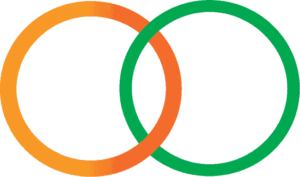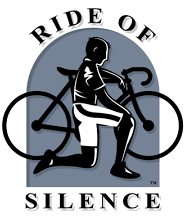
© California Bicycle Coalition 2025

1017 L Street #288
Sacramento, CA 95814
© California Bicycle Coalition 2025
For Immediate Release: 5/18/22
Contact:
Jared Sanchez, CalBike (714) 262-0921, Jared@CalBike.org
Update: SACRAMENTO, May 21: All the active transportation bills advanced out of the Appropriations Committee except AB 2336 (speed cameras) and AB 1975 (bus shelters).
SACRAMENTO – The California Bicycle Coalition (CalBike) is following multiple bills in Sacramento this year that address issues of concern for Californians who walk, bike, and use our streets for active transportation.
Eight bills essential to preserving California’s climate, increasing equity, and making our communities safer for residents of all ages will be heard by the California Assembly Appropriations Committee this week.
“Bills are often killed in the Appropriations Committee,” said CalBike Senior Policy Advocate Jared Sanchez. “That’s why this week’s hearings are so critical. These bills represent a major step forward to make it safer to bike and walk, improve air quality, reduce climate-killing pollution, and advance transportation justice.”
This bill requires all transportation projects funded at the local or state level to align with the California Transportation Plan and the Climate Action Plan for Transportation Infrastructure adopted by the Transportation Agency. This effort will codify California’s efforts to align transportation funding with our climate goals.
This bill will prohibit any state money from funding or permitting freeway widening projects in areas with high rates of pollution and poverty. As decades of research have shown, low-income communities of color are most burdened by highway pollution that causes unnecessary cases of asthma and other major health issues.
The bill would ensure that bus and pedestrian shelter and street furniture is treated as a critical and funded infrastructure asset to prioritize shade as an essential need for all Californians.
This bill is the sequel to the Freedom to Walk legislation that passed the assembly and senate last year. After Governor Newsom’s veto, Assemblymember Phil Ting revamped the bill to address the governor’s concerns. The revised version will direct police not to ticket for safe pedestrian mid-block crossings while keeping jaywalking laws on the books. Ending enforcement of safe midblock crossings will reduce opportunities for police encounters that too often become violent for people of color.
This bill would bring local transportation planning and funding into alignment with sustainable community strategies (SCS) and the state’s climate and air quality standards. California has struggled to align land use with the need to reduce vehicle miles traveled and the corresponding emissions that cause air pollution and climate change. AB 2237 would require regional or county transportation agencies to rank their transportation projects and prioritize them according to adherence to sustainable communities strategies and state climate and air quality standards. Most importantly, funding would follow that prioritization, so that the projects that most support clean mobility (many bike projects) would be the first implemented. Projects that undermine climate and air quality standards would not be funded.
This bill establishes an automated speed enforcement pilot program in a few cities.
This bill requires each transit agency to offer free transit passes to every person under the age of 26 years. This lack of a statewide program leaves millions of low-income and diverse youth without affordable or accessible transportation options. It also forces many to be dependent on greenhouse gas-emitting personal vehicles to the detriment of their communities’ environmental health.
Requires Caltrans and cities to update all pedestrian control signals to operate giving a pedestrian a head start between 3 to 7 seconds to enter an intersection with a corresponding circular green signal.
With an open seat, we hope you vote for Jennifer Esteen on June 7th. Jennifer brings a lot of new energy to the East Bay area, and for the greater residents of the state. On issues from biking, to affordable housing, and transportation justice, Esteen gave excellent responses to our questionnaire and holds great promise for AD 20.
Assembly District 20 centers around Hayward, going as far north as San Leandro and Dublin in the east. The area is served by regional transit (Bay Area Rapid Transit). However, this route is heavily dependent on cars, so much so that Interstate 880 is constantly bogged down with congestion and toxic air. We are very pleased that Jennifer understands this and it is reflected in her transportation platform, which centers working families and mobility options that can help meet our state’s environmental sustainability, public health, and social equity goals. Jennifer is clearly making it a priority to serve all residents of her district, with a focus on low-income populations that are often marginalized, especially in suburban areas. In her questionnaire responses, she said she wants to “tackle business-related transportation emissions such as emissions from shipping and trucking”, while at the same time “investing in low-income communities and communities of color to improve access and lower the cost of public transportation, and to increase the safety and accessibility of active transportation”. She further adds: “ Low-income families are some of the most active users of public transit. Creating cheaper and better options for these families is not only an issue of equity, but of economic justice.” That is the type of change we can get behind for AD 20, which is why we are endorsing Jennifer Esteen.
The rest of her questionnaire responses are equally as impressive for their breadth and depth of knowledge. For these reasons, we are excited to see Jennifer Esteen emerge as the prominent candidate in the Assembly District 20 race. We look forward to seeing her provide the leadership needed to work toward safer and more sustainable transportation alternatives for all California residents.
CalBike is pleased to endorse Jennifer Esteen for District 20 Assembly Member. Please vote for Jennifer Esteen on June 7, 2022.
Click here to see Jennifer Esteen’s full questionnaire responses.
As a longtime educator and community organizer, Andrea Rosenthal has experience addressing the longtime neglect of the Antelope Valley and delivering the resources the LA High Desert needs to level the playing field. When she is elected to represent the newly-created Assembly District 39, Rosenthal will focus on underserved and underinvested communities that bear the brunt of the worst health conditions as a direct result from relative environmental pollution. Rosenthal’s priority on our most disproportionately impacted communities, alongside a strong vision for safe streets, is long-needed in the Antelope Valley. Her leadership will be a critical change of pace from the former assembly representative in this area who ignored both equity and bicycling.
The newly-formed Assembly District 39 represents the eastern side of the Antelope Valley, also known as Los Angeles’ High Desert, spanning from Palmdale to Victorville. The area is a patchwork of sprawling desert communities, definitely some of the most difficult biking and walking terrain in California. But that doesn’t stop Andrea from supporting policies that make streets more walk-able and bike-able vs. car-oriented infrastructure updates. She supports the expansion of shared mobility that can help limit fuel emissions from cars on the road and aid communities in their commute where a car or reasonable public transportation is unavailable to them. This type of forward-thinking is why CalBike enthusiastically supports Andrea Rosenthal for AD 39.
The rest of her questionnaire responses are equally as impressive for their breadth and depth of knowledge. For these reasons, we are excited to see Andrea Rosenthal emerge as the prominent candidate in the AD 39 race. We look forward to seeing her provide the leadership needed to work toward safer and more sustainable transportation alternatives for all Californians.
CalBike is pleased to endorse Andrea Rosenthal for Assembly District 39. Please vote for Andrea Rosenthal on June 7, 2022.
Click here to see Andrea Rosenthal’s full questionnaire responses.
Dawn Addis’s platform reads like a bicycle advocates’ dream. She gets the importance of bicycling as a component of sustainable transportation and a socially just society. Dawn has an excellent track record as a Morro Bay Council Member to back up her claims. With Dawn Addis as Assembly Member, we’ll have an ally who will have our back no matter how bold our demands.
Assembly District 30 serves the central coast of California. The district essentially follows the coast from Santa Cruz to San Luis Obispo, a very broad swath of some of California’s most scenic, yet vulnerable, areas. As a leader in an area that has and will continue to see drastic changes due to our climate crisis and the transportation systems that fuel it, Dawn has always been a strong supporter of active transportation. As a Morro Bay Councilmember, Dawn has the knowledge to put forth new bold ideas. For example, Dawn will “support increased funding for the Active Transportation Program, as the promotion of non-motorized transportation will work towards addressing the climate crisis, an urgent issue for AD 30.” This type of proposal aligns with the recent finding that VMT in most metropolitan regions remains unchanged, and in some cases, has increased in recent years.
The rest of Dawn’s questionnaire responses are equally as impressive for their breadth and depth of knowledge. For these reasons, we are excited to see Dawn emerge as the prominent candidate in the AD 30 race. We look forward to seeing her provide the leadership needed to work toward safer and more sustainable transportation alternatives for all California residents.
CalBike is pleased to endorse Dawn Addis for District 30 Assembly Member. Please vote for Dawn Addis on June 7, 2022.
Click here to see Dawn Addis’s full questionnaire responses.
As a former member of the state assembly, Dave Jones already has experience championing what a fossil-free economy can look like in the capitol. Despite that such a stance will inevitably create friction among a variety of special interests, he is up for the absolutely necessary fight, simply because he knows we have no time to waste. Jones understands that our carbon-based economy absolutely needs to change, especially in our transportation sector, which is responsible for a large part of emissions.
Senate District 8 represents the City of Sacramento, stretching as far south to Elk Grove and north to North Highlands. Centered on the main transportation corridor of Interstate 5, and its surrounding arterials, it is almost exclusively designed for fast car movement. As a result, the district (outside the city center of Sacramento) is yet another area dominated by unfriendly infrastructure for cyclists. But that won’t stop Jones from supporting policies that make streets more walk-able and bike-able. In response to our questionnaire Jones said he’s committed to “more investments in regional rail and public transportation generally, and make it easier to accomplish infill residential development, to reduce dependence on vehicles by locating housing near where people work and near public transit”. He also supports investment in bike trails, lanes and other features to make biking safer and more accessible in and outside cities.
The rest of his questionnaire responses are equally as impressive for their breadth and depth of knowledge. For these reasons, we are excited to see Dave Jones emerge as the leading candidate in the Senate District 8 race. We look forward to seeing him provide the leadership needed to work toward safer and more sustainable transportation alternatives for all Californians.
CalBike is pleased to endorse Dave Jones for Senate District 8. Please vote for Dave Jones in the general election June 7, 2022. Click here to see Dave Jones’ full questionnaire responses.
On April 16, 2022, a driver pulled around another car in Griffith Park and hit Andrew Jelmert at high speed, killing him. Jelmert was leading a training ride for the AIDS Lifecycle, a fundraising ride that the 77-year-old realtor had completed four times, so there was an unusual number of witnesses to his death. Unfortunately, he’s just one of many victims of traffic violence on California and U.S. streets. Unlike Jelmert, most of them are privately mourned by families with a hole where a loved one used to be.
CalBike has worked and continues to work to change the conditions that make California roads so deadly, especially for people biking and walking and particularly for our most vulnerable residents.
The most recent statistics on traffic deaths are from 2020, when most of us stayed home to prevent the spread of COVID. That year, traffic violence killed 38,824 people in the U.S. California saw 3,847 traffic fatalities in 2020, an increase over 2019 despite less driving, and 3,246 people died on California streets in just the first nine months of 2021.
There are lots of reasons for the spike in traffic fatalities and injuries over the past few years, including:
These causes center on driver responsibility, and drivers should be held accountable for their negligence. A new federal policy that will require automakers to consider the safety of people outside their vehicles, not just inside, is a step in the right direction. However, there is one thing that can significantly reduce injuries and deaths and make our streets safe for all users: infrastructure.
California has spent decades reshaping our communities to move more cars faster with little regard for the consequences. The people killed and injured are treated as collateral damage, an unavoidable downside to the civic good of giving people the ability to drive really fast in really big cars.
Traffic fatalities are only part of the violence wrought by car-first planning principles. Many more people survive collisions, but with injuries that can be life-changing. And the preference for speed and wide travel lanes ropes off large swaths of our civic space because people biking and walking can’t access it safely. That’s not counting the secondary injuries of car dependence: strokes, heart attacks, asthma, Alzheimer’s, and other diseases caused by breathing polluted air; the destruction of primarily Black and brown neighborhoods for freeway building; poor health outcomes due to lack of physical activity; and more.
Until recently, local and state governments accepted this status quo as our Faustian bargain for the miracle of motorized transport. In recent years, new laws plus changes in leadership and culture at California’s transportation agencies have begun to tip the balance ever so slightly toward building safer streets for everyone. The trend is continuing with this year’s raft of legislation. Could we be on the verge of the long-overdue transformation to truly bikeable and walkable communities across California?
After years of resisting almost any changes that shifted the agency from its singular focus on moving cars, Caltrans has been making promising changes. The agency began to take its own Complete Streets policy seriously after the 2019 appointment of Toks Omishakin as its director. Mr. Omishakin immediately ordered an overhaul of the state’s most significant funding program to identify bike and pedestrian safety improvements, moving $100 million into safety improvements. Omishakin was recently appointed as Secretary of CalSTA, where we expect he will bring his forward-thinking approach to California’s transportation authority.
The governor hasn’t named Omishaken’s successor at Caltrans yet, but we hope the next leader will continue the positive changes started during his tenure. And we witnessed the growing culture change at the recent California Bicycle Summit. At a session called State Leadership for a New Paradigm, Caltrans and CalSTA staffers both on the panel and in the audience voiced their determination to use Caltrans projects to create safer streets for people who bike and walk.
In 2019, Senator Scott Wiener (San Francisco) introduced the country’s boldest complete streets mandate, requiring Caltrans to include safety improvements in repair and maintenance projects. Governor Newsom vetoed that bill, but it laid the foundation for the policy change at Caltrans that Omishakin implemented and oversaw.
Unfortunately, vetoing safe streets proposals has become a theme in Newsom’s administration. He vetoed a bill that would have brought bicycle highways and 15-minute neighborhoods to California and two other bills legalizing safe and practical use of the streets. The Freedom to Walk Act would have removed the prohibition against crossing midblock when no traffic is present. And the Bicycle Safety Stop would have allowed people on bikes to treat stop signs as yields, a reform already in place in eight states.
In 2021, the governor did sign AB 43, a critical bill that gives cities more latitude to reduce speed limits, creating safer streets. But we need much more to build neighborhoods and streets where people can safely walk and bike for everyday transportation. And that’s what CalBike is working toward in 2022, with many active transportation champions in the state legislature and a set of bills that could have a huge impact on California’s streets.
This year, CalBike is following and supporting a long list of bills that will positively impact our communities and provide alternatives to climate- and soul-killing modes of transportation. If these and several other bike-friendly bills become law, they will eventually change the shape of our communities, making them safer, greener, and more liveable.
CalBike’s two measures from 2021, legalizing pedestrian street crossings and the Bicycle Safety Stop, are back with revisions that promise to overcome the governor’s objections. And the National Highway Traffic Safety Administration recently published a safety fact sheet endorsing stop-as-yield laws as a way to increase safety and promote bicycling, adding weight to the arguments in favor of the safety stop.
Assemblymember Friedman has brought back her regional transportation planning bill, facilitating bicycle highways and reducing car parking requirements. In addition, she has introduced the OmniBike Bill, with numerous changes to traffic regulations that will make people on bikes safer. CalBike is cosponsoring an ambitious bill from Senator Anthony Portantino that will require cities to add bike infrastructure to their general plans—and then build it quickly.
But these policy changes are just the beginning if we hope to accomplish the changes we need fast enough. Without funding, communities may have the best intentions to build better bikeways but not the means to carry out their plans, so money to build the infrastructure we need to make streets safer is crucial.
In the most recent round of funding for the Active Transportation Program, even with a budget boost, there was only enough money to greenlight a fraction of the worthy projects. CalBike is campaigning for $2 billion for bikes, which will add enough to the ATP to build many more excellent bike-friendly projects, plus provide funding to break ground on the revolutionary changes envisioned in this year’s legislation. As of this writing, the budget contains $1.1 billion for bikes, which is a huge victory. But we’re not stopping, especially now that the budget surplus has more than doubled to $68 billion.
Andrew Jelmert left behind a husband, now widowed, and a community in mourning. Press accounts put the onus squarely on the driver, and the police took the incident seriously. The driver fled but was caught and charged with murder. With dozens of witnesses and 300 people on the training ride, this traffic death was hard to ignore or blame on the cyclist. Indeed, the incident has led to a petition to close Griffith Park to through traffic that has gotten about 1,600 signatures as of this writing.

But the response to this horrific incident is the exception, not the rule. Police in California still rule the bike rider at fault in about half of all bike-car collisions, data that the governor used to veto safety legislation in 2021.

Calling out traffic violence is the first step in taking it seriously and ending it. But programs like Vision Zero are meaningless if they aren’t backed by action, and blaming drivers or bike riders won’t solve the problem. Changing infrastructure will.
Hundreds of bike riders die or are injured on California streets each year, often without witnesses or fanfare, often in underserved communities where poor infrastructure makes the streets dangerous. The Ride of Silence (on May 18 this year) commemorates all the people on bikes lost to traffic violence around the world.
We need infrastructure that protects people on bikes from “mistakes” and “accidents.” California needs to spend money now to build the infrastructure we need to save lives. CalBike won’t stop advocating for that until there are no more Andrew Jelmerts killed by reckless driving, no more families and friends left bereft at the senseless toll of our dangerous roadways.
Laura Friedman is perhaps the strongest supporter of bicycling and active transportation in the California Assembly, and she’s in a tough race for reelection because of redistricting. CalBike is issuing an early endorsement for Assemblymember Friedman because we hope our members will donate to and volunteer for her campaign ahead of the June primary election.
As an assemblymember and chair of the Transportation Committee, Friedman helped pass critical bills that would make our streets safer and our communities healthier. In 2021, she authored one of CalBike’s favorite bills, a seemingly administrative change to the way regional transportation plans are written that would have allowed communities to build bicycle highways and incentivized 15-minute neighborhoods. The measure represented a bold and necessary step toward mitigating climate change and Friedman’s visionary ideas advanced the idea that bicycles are an essential part of California’s transportation future, despite the governor’s veto.
Assemblymember Friedman formerly represented Assembly District 43, which covered parts of Glendale, West Hollywood, and the San Fernando Valley. Due to redistricting after the 2020 census, she is now in the newly-drawn Assembly District 44. Friedman will be running against an incumbent in a district that is more suburban. It’s hard to overstate the importance of allies like Laura Friedman in our state legislature. Please visit her campaign website, volunteer, and donate. Laura Friedman is a terrific assemblymember who deserves another term.

© California Bicycle Coalition 2025

1017 L Street #288
Sacramento, CA 95814
© California Bicycle Coalition 2025
